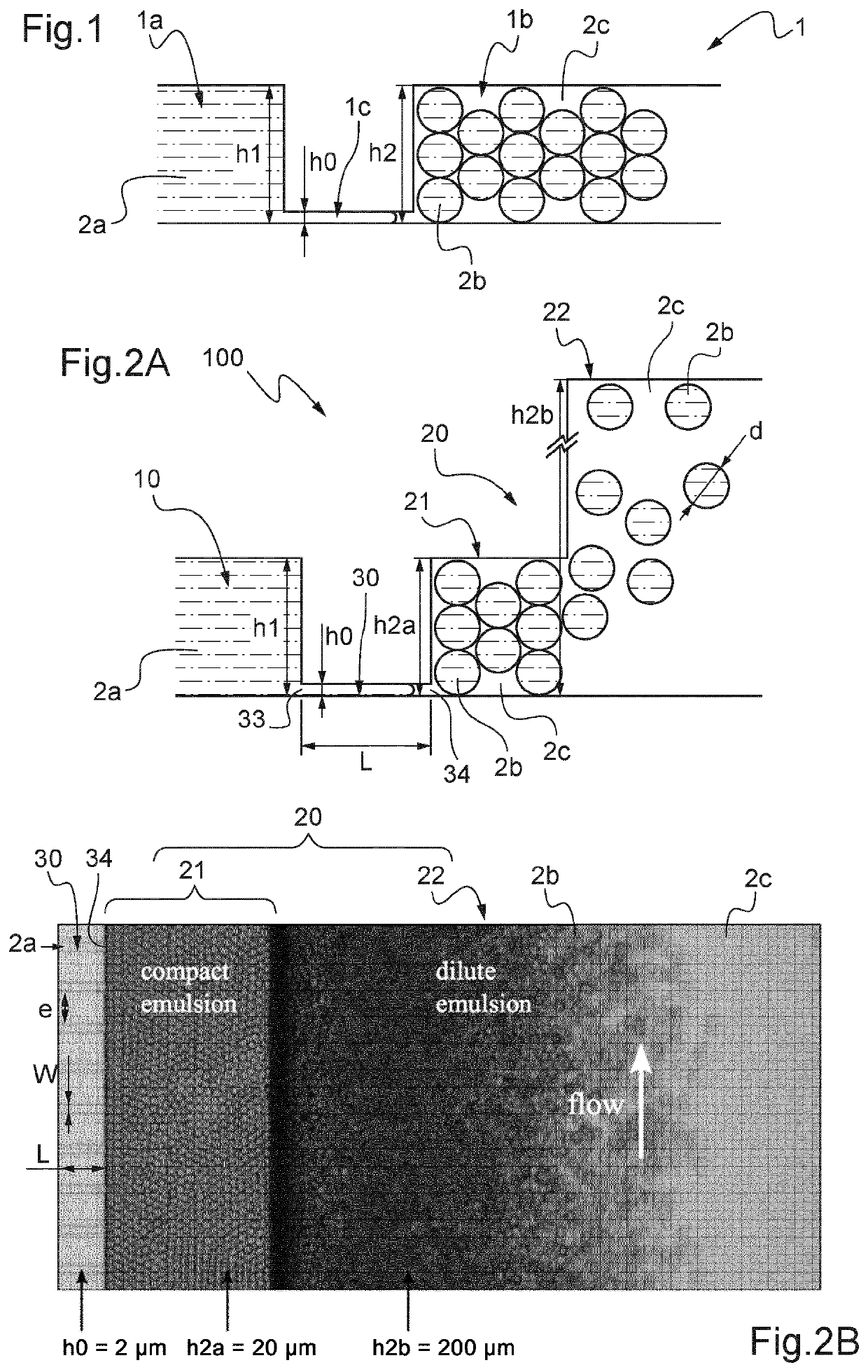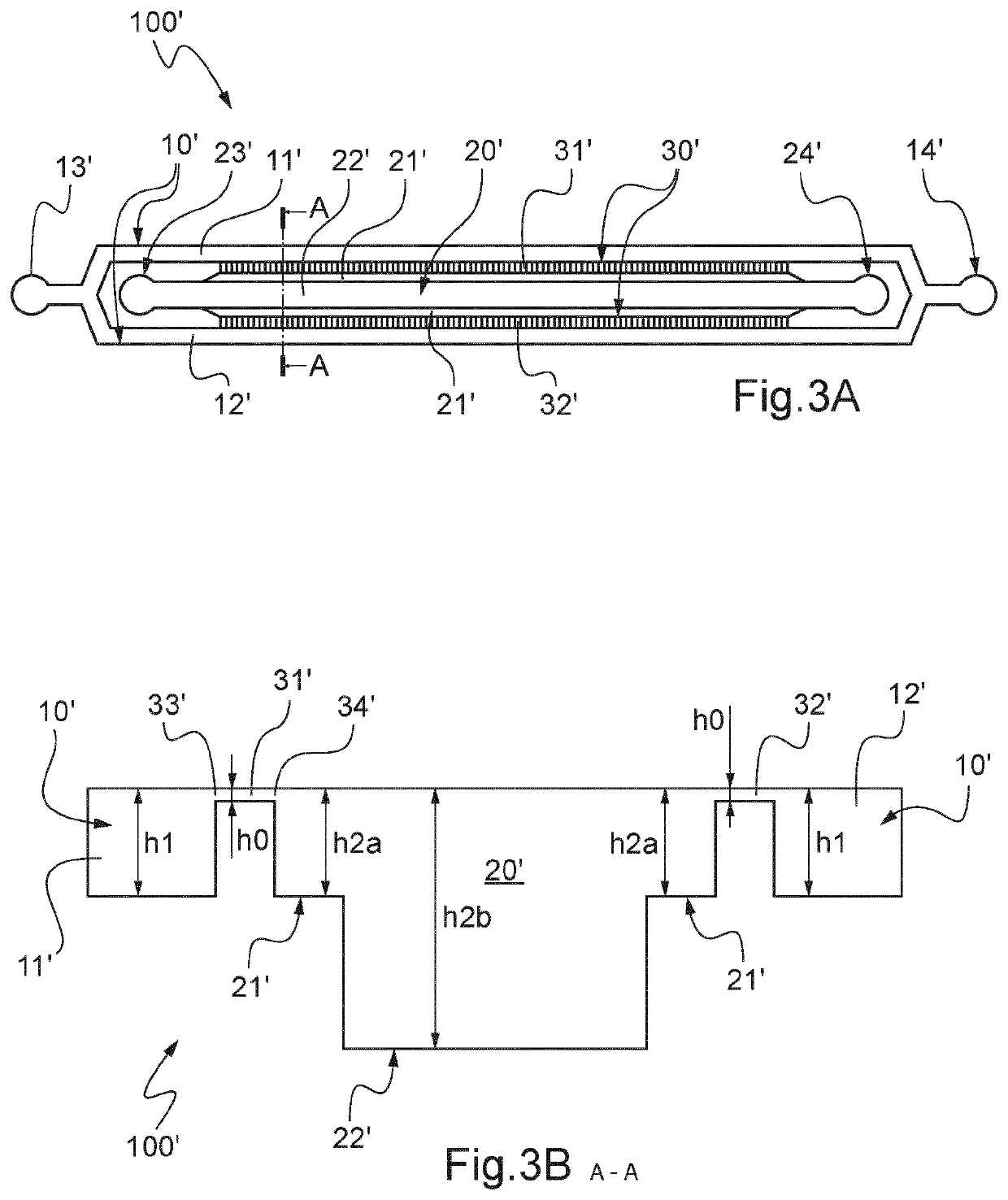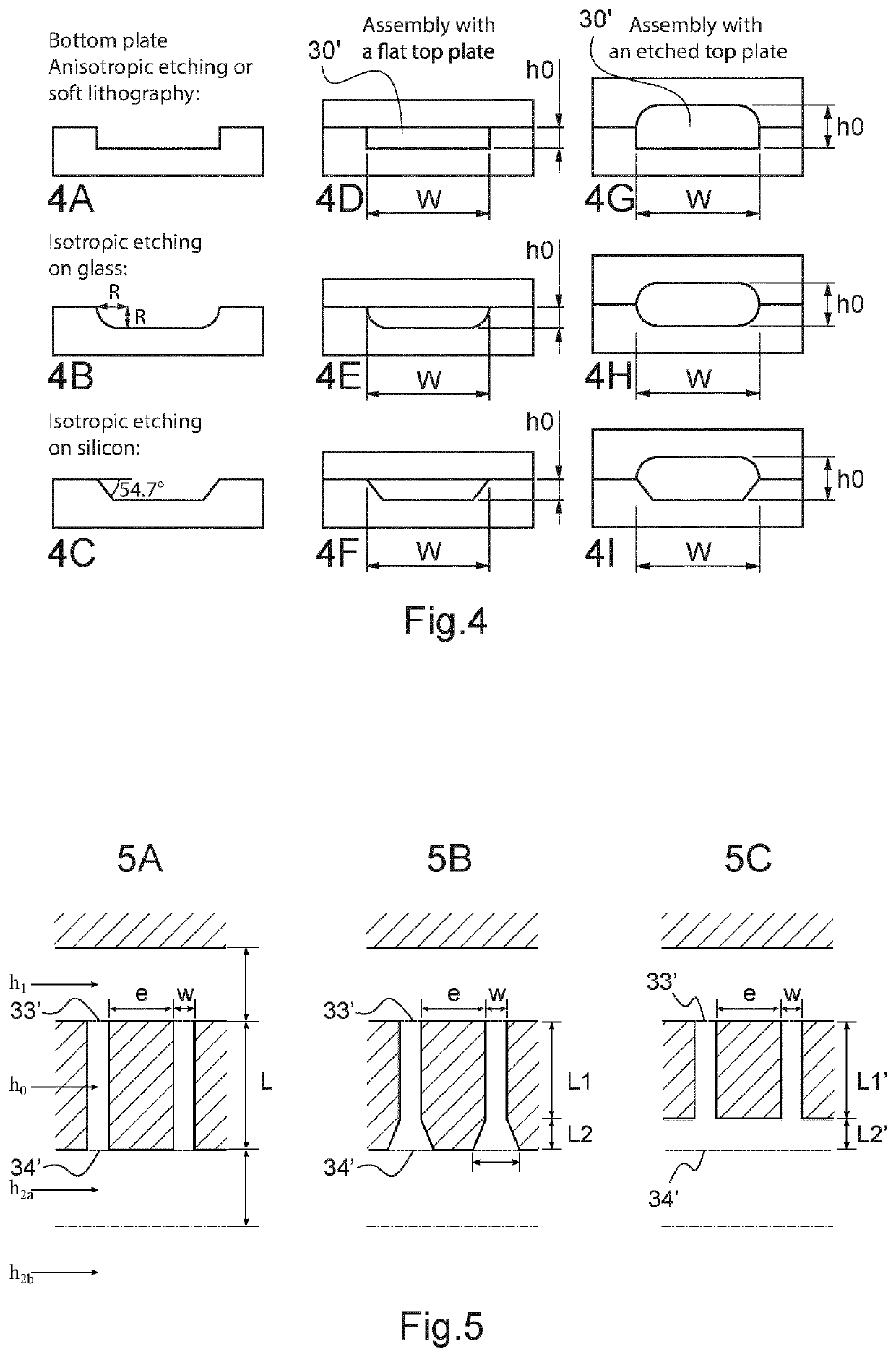Emulsion production microfluidic device
- Summary
- Abstract
- Description
- Claims
- Application Information
AI Technical Summary
Benefits of technology
Problems solved by technology
Method used
Image
Examples
first embodiment
[0150]A diagram of a microfluidic device 100′ for producing an emulsion is shown in FIGS. 3A and 3B (cross-section along the dotted line A-A) compliant with the principle of FIG. 2A.
[0151]In one embodiment, the dimensions of the microfluidic parts of such microfluidic device 100′ can be about 10 cm (length L0)×1 cm (width WO). For example, the height of the device would be the biggest height amongst h1, h2b.
[0152]Microfluidic device 100′ comprises a first channel 10′, a second channel 20′, and two facing arrays 31′,32′ of microchannels 30′ linking the first channel 10′ to the second channel 20′.
[0153]In one embodiment, each array 31′,32′ comprises 1 000 microchannels 30′.
[0154]Each microchannel 30′ has an inlet 33′ from the first channel 10′ and an outlet 34′ to the second channel 20′ (see FIG. 3B).
[0155]The second channel 20′ is, in the present invention, centrally positioned in the device between the two arrays of microchannels 30′.
[0156]Besides, it is straight here.
[0157]The se...
second embodiment
[0186] FIG. 5B shows microchannels having a first part with a constant width W along their length L1 and a second part which is flared along their length L2.
third embodiment
[0187] FIG. 5C shows microchannels having a first part with a constant width W along their length L1′ and a second part which is common to several microchannels along their length L2′, corresponding to coalescence of several microchannels.
[0188]The second parts of the microchannels have a same height h0.
1. First Emulsion Production Example
[0189]The phase to be dispersed 2a is decane (which is an alkane composed of a linear chain of ten atoms of carbon (C)), the continuous phase 2c is water with sodium dodecyl sulphate.
[0190]The flows of both phases are controlled by imposing a pressure on each reservoir containing the liquids and which are connected to the corresponding entry ports of the microfluidic device.
[0191]As shown in FIG. 6, oil-in-water drops 2b are formed at the end of the microchannels 30′, forming a compact emulsion having homogeneous size as revealed by the arrangement of the drops in a crystal like fashion.
[0192]The compact emulsion then flows to the central part 22′ ...
PUM
| Property | Measurement | Unit |
|---|---|---|
| Width | aaaaa | aaaaa |
| Height | aaaaa | aaaaa |
| Hydrophilicity | aaaaa | aaaaa |
Abstract
Description
Claims
Application Information
 Login to View More
Login to View More - R&D
- Intellectual Property
- Life Sciences
- Materials
- Tech Scout
- Unparalleled Data Quality
- Higher Quality Content
- 60% Fewer Hallucinations
Browse by: Latest US Patents, China's latest patents, Technical Efficacy Thesaurus, Application Domain, Technology Topic, Popular Technical Reports.
© 2025 PatSnap. All rights reserved.Legal|Privacy policy|Modern Slavery Act Transparency Statement|Sitemap|About US| Contact US: help@patsnap.com



